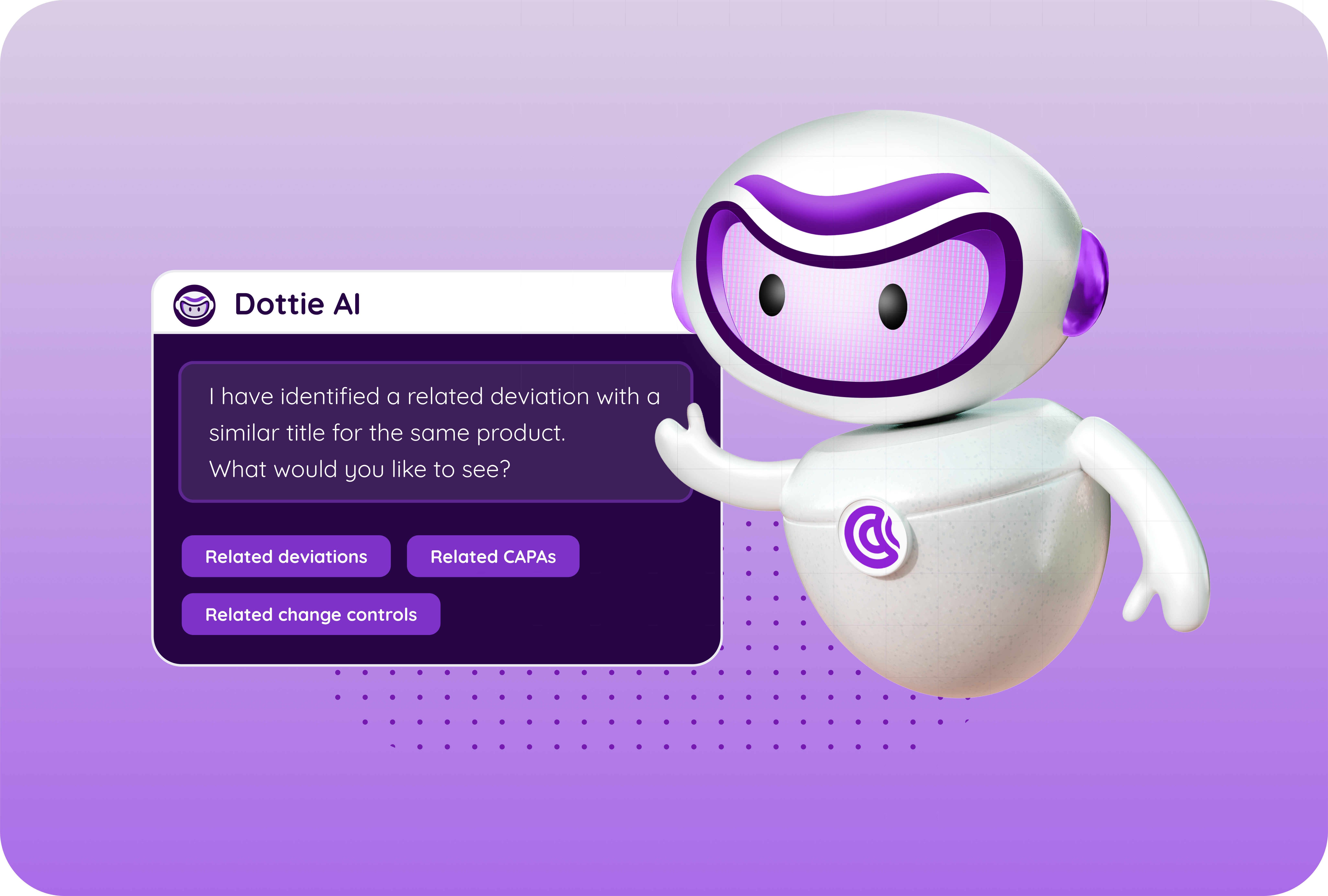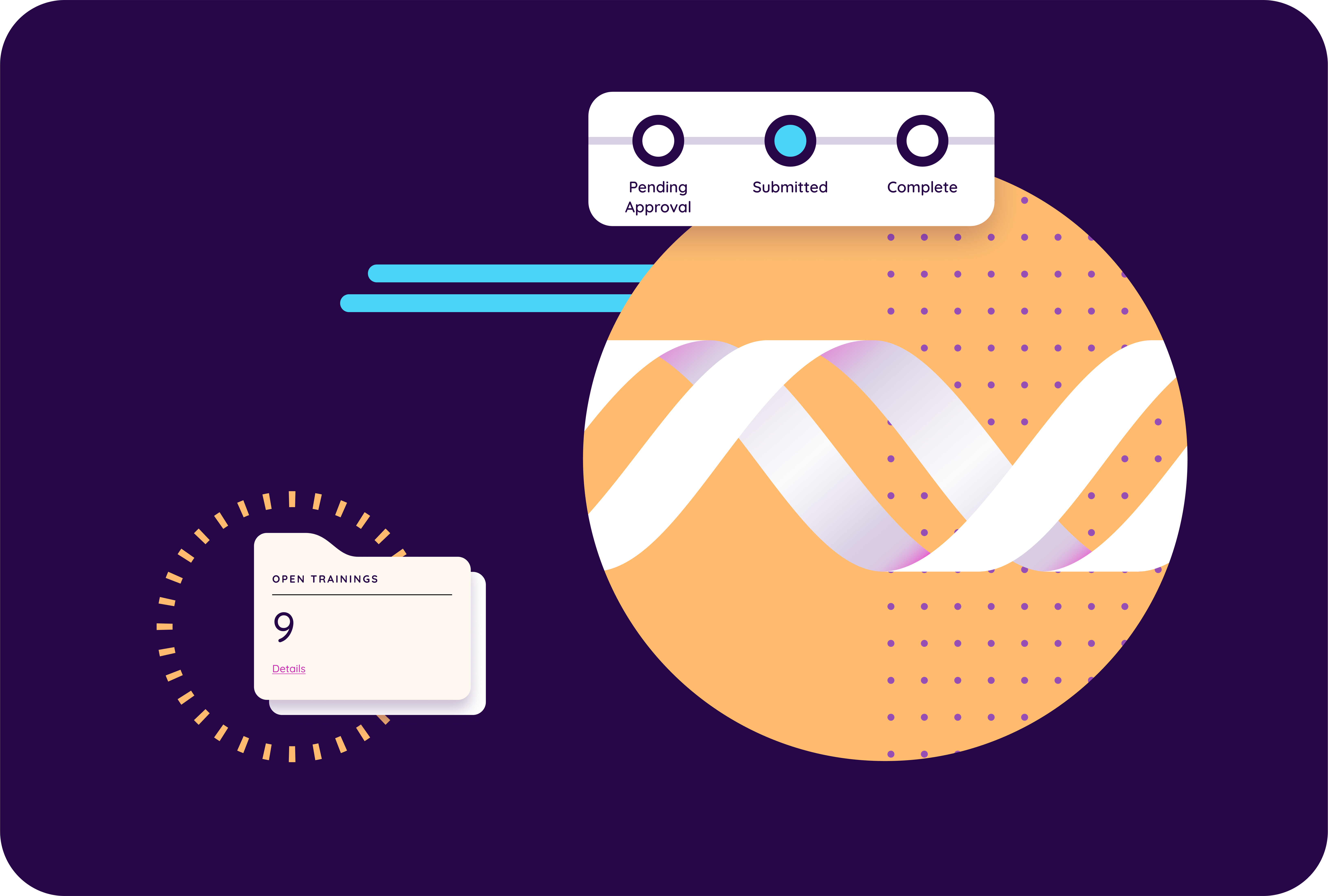Can a QMS Help You Pass an FDA Audit?

For pharmaceutical, biotechnology, and medical device companies, passing an FDA audit is essential to maintaining market access, avoiding enforcement actions, and protecting patient safety. Yet many organizations treat audits as reactive events instead of continuous obligations.
The right quality management system (QMS) changes that.
A modern, validated QMS built for life sciences provides the structure, documentation, and oversight the FDA expects. It doesn’t just help you pass an audit. It helps you stay audit-ready year-round.
Below, we explain how a QMS supports FDA compliance and prepares your team to manage inspections with confidence.
What the FDA Looks for in an Audit
FDA inspectors assess whether your organization follows current Good Manufacturing Practices (cGMPs) and complies with regulations such as:
- 21 CFR Part 11 (electronic records and signatures)
- 21 CFR Parts 210 and 211 (pharmaceutical cGMP)
- 21 CFR Part 820 (quality systems for medical devices)
- EU Annex 11 (if operating in Europe)
They’ll examine:
- Documented procedures and SOPs
- Quality event logs and CAPA records
- Validation documentation
- Training records
- Supplier and change controls
- Data integrity and audit trails
Inconsistent records, unvalidated systems, or untrained employees can lead to Form 483 observations or warning letters. An audit-ready QMS helps close these gaps.
1. Document Control and SOP Management
Auditors often begin by reviewing documentation. A QMS gives you centralized control over:
- Standard operating procedures (SOPs)
- Policy and work instructions
- Version histories
- Review and approval workflows
An audit-ready QMS ensures your documents are current, approved, and accessible. It also creates a traceable history of changes and approvals, which is essential to demonstrating compliance.
How it helps:
- Eliminates outdated or uncontrolled SOPs
- Speeds up document retrieval during audits
- Ensures version control and approval transparency
2. System Validation and Change Control
The FDA expects companies to validate their systems and maintain control over changes. A modern QMS tracks and documents:
- System validation protocols and reports
- Changes to processes, equipment, and software
- Risk assessments and justification for changes
By automating these processes, a QMS reduces manual errors and keeps validation documentation audit-ready.
How it helps:
- Maintains validation traceability
- Ensures changes are approved, documented, and justified
- Reduces risk of overlooked system updates
3. CAPA and Quality Event Tracking
Inspectors closely evaluate how your company identifies, investigates, and resolves quality issues. A QMS helps standardize your approach to:
- Deviations
- Nonconformances
- Complaints
- CAPA
With built-in workflows, root cause tools, and automatic escalation, your QMS shows that issues are managed proactively.
How it helps:
- Demonstrates a systematic approach to issue resolution
- Tracks CAPA timelines, effectiveness checks, and status
- Builds a complete audit trail of quality events
4. Electronic Signatures and Audit Trails
To meet 21 CFR Part 11, your QMS must provide:
- Unique user access and secure login
- Electronic signature tracking
- Tamper-evident audit trails
Audit trails must capture who did what, when, and why—especially for records like CAPAs, changes, and approvals.
How it helps:
- Proves data integrity and traceability
- Prevents unauthorized changes
- Meets FDA expectations for electronic records
5. Training Management and Role Qualification
Inspectors often interview employees and ask for proof of training. A QMS can assign, track, and document:
- SOP-specific training requirements
- Training status by user and role
- Retraining due to procedural changes
It also ensures employees sign off on the most current procedures, reducing compliance risk.
How it helps:
- Demonstrates that staff are trained and qualified
- Flags overdue or incomplete training
- Links training to controlled documents
6. Supplier Quality Oversight
FDA audits frequently include review of your supplier management process. A QMS allows you to:
- Approve and audit suppliers
- Maintain supplier risk ratings and performance data
- Track incoming inspections and complaints
Your QMS should document how you qualify suppliers and ensure the quality of externally provided materials and services.
How it helps:
- Improves traceability in your supply chain
- Shows active monitoring of supplier performance
- Keeps supplier approvals and audits up to date
7. Inspection-Ready Reporting and Dashboards
Real-time visibility into your quality metrics can help you anticipate and respond to audit questions. A modern QMS includes dashboards and reports to track:
- CAPA status
- Training completion
- Open deviations
- Document control metrics
This transparency supports management review and continuous improvement—two areas the FDA expects you to demonstrate during audits.
How it helps:
- Supports proactive audit preparation
- Highlights potential risk areas
- Keeps leadership informed
8. Internal Audit Management
Finally, your QMS should help you run internal audits and corrective actions. This shows the FDA that you are continuously monitoring and improving your QMS.
Look for features like:
- Audit planning and scheduling
- Issue tracking and follow-up
- Reporting on audit outcomes
How it helps:
- Documents your internal oversight
- Flags gaps before the FDA does
- Reinforces a quality-first culture
Final Thoughts
Passing an FDA audit is not about scrambling to prepare. It’s about staying prepared. An effective QMS improves your ability to demonstrate control, consistency, and compliance.
The right QMS helps you organize documentation, enforce quality processes, and provide transparent evidence of compliance. More importantly, it helps your team operate with confidence under scrutiny.
Ready to see how a QMS can improve your audit readiness? Request a demo to see firsthand.



